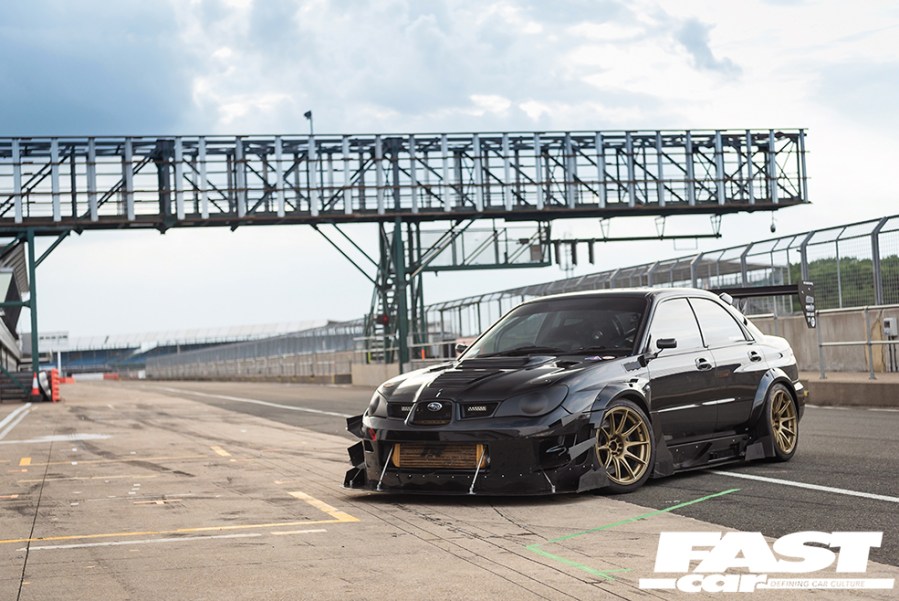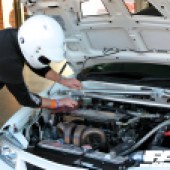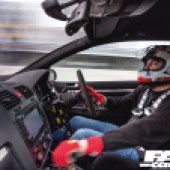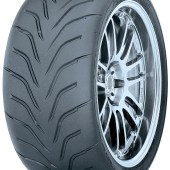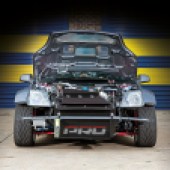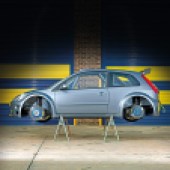Race circuits are the perfect place to push your driving skills to the max, but you must ensure your car is ready for the stress. Following this simple guide on how to prepare your car for a track day will enhance your enjoyment and take a lot of the fear out of it. It should also help you bring your pride and joy home in one piece!
Guide from Fast Ford magazine.
Prepare your car for a track day
Suspension
At the very least you’ll want to fit a set of uprated lowering springs. These will help lower the centre of gravity and reduce body roll, but a more common upgrade is to fit springs and dampers, usually of coilover type. These allow ride-height adjustment to get the car sitting just right, and many also offer adjustable damping rates.
It’s also worth looking at the bushes. Most standard bushes are rubber and are designed to have a bit of give in them for comfort during road use. A good set of polyurethane bushes reduces this unwanted movement and is perfect for occasional track use, meanwhile staying fine for road use.
No matter what upgrades you’ve made, the best money you’ll spend will be in getting everything set up. Whether that’s a simple alignment check or a full corner-weighting session, getting a geometry check is one thing you should definitely do before heading out on track.
Be sure to check our suspension guide for more information. We also have guides on coilovers as well as dampers so you can become an expert when it comes to all things suspension.
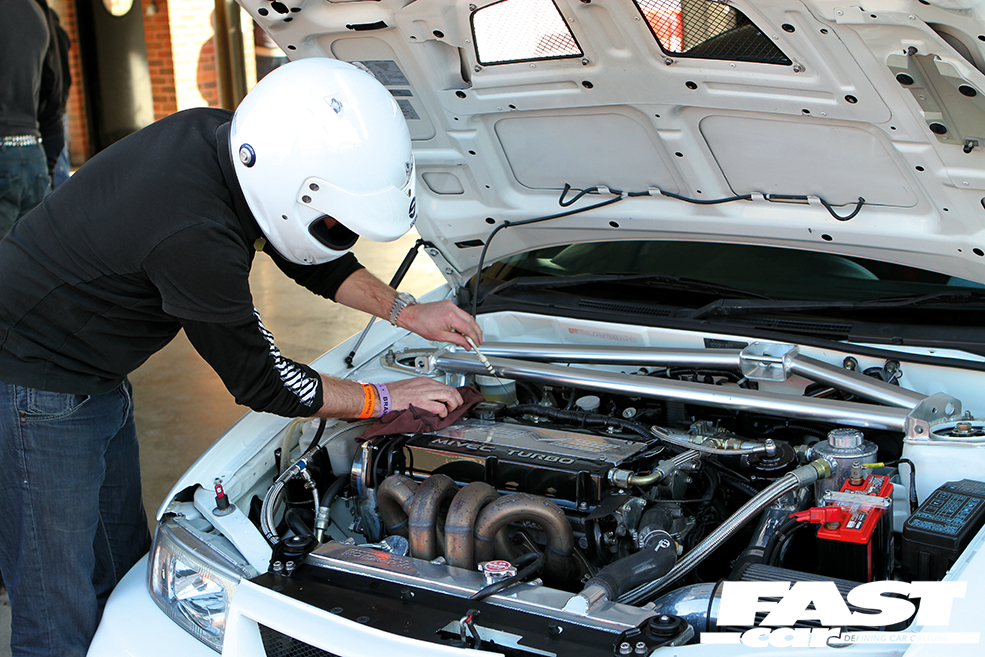
Engine
No matter the state of tune, using your car on track is going to put extra stresses on the engine that are not usually experienced in everyday driving conditions. Therefore it’s vital that what you’ve got is running 100 per cent correctly before you even start to think about any upgrades, so a health check (and diagnostics if required) should be your first port of call when you prepare your car for a track day.
It’s good practice to change the oil and filter, and you should also check the condition of cam belts, auxiliary belts, the electrical system, hoses (coolant, boost, oil) and fuel lines, as well as topping up any fluid levels. Misfires are a common cause for concern on track, so make sure your ignition system is in top condition too.
Thrashing the car around a track will cause fuel in the tank to get sloshed around all over the place, potentially resulting in the pick-up drawing in air rather than fuel. The easiest way to combat this is to make sure you’ve got at least half a tank of fuel before heading out on track – you don’t want a brimmed tank either, as the excess may spill out of the overflow and cause you to get black-flagged. Regular track-dayers may want to invest in a dedicated fuel tank with baffles and/or the use of a swirl pot and lift pump.
Another area worth upgrading is the oil breather system. Sustained track use will cause increased crankcase pressure, and this pressure needs to be released safely, which is where a good breather system comes in.
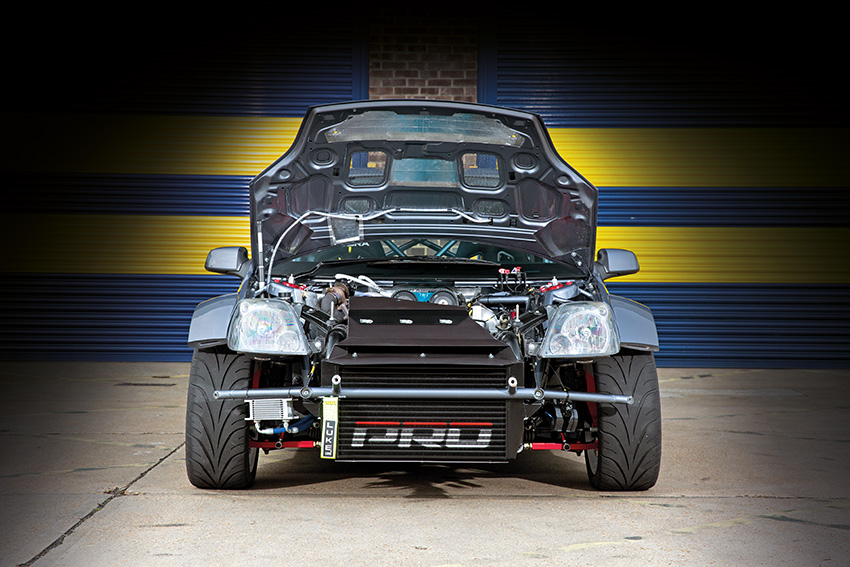
Keep your car cool on a track day
The next step in our guide to helping you prepare your car for a track day might seem like an obvious one, but it’s often overlooked. On track everything will get hot. Very hot. Engine coolant, engine oil, exhaust systems, transmission fluid, brakes and brake fluid all get much hotter during track use than normal road use. Check things like the radiator, coolant hoses, cooling fans and the coolant itself, and replace anything you are unsure of.
Once you are satisfied that the standard cooling systems are working as they should you can look to introduce extra cooling measures. Upgrades such as oil coolers, exhaust heat wrap, bigger radiators and intercoolers, and additional ducting to the brakes will all help keep temperatures under control while on track.
You should always complete a cool-down lap before you come back into the pits, too. This allows things to cool down gradually while everything is still moving. When back in the pits, don’t switch the engine off, and don’t put the handbrake on. Instead use some chocks to prevent the car from rolling (using the handbrake can cause the discs to warp) and leave the engine running until you are satisfied everything has cooled down sufficiently.
Check out our guide to how to keep your car cool for more information on cooling.
Transmission
Make sure the oil in the gearbox and diff(s) is of a good quality and not just the cheapest stuff you could buy online. Also check your clutch is in good health; any signs of slipping during road use will mean it will only last a few laps on track. If you’ve increased the power/torque output of the engine, an uprated clutch is worthwhile.
A simple quick-shifter kit will help speed up gear changes and can make a notable difference on track. Upgrading stock differentials to limited-slip types will offer increased traction during cornering, and you can even choose the type of diff that will best suit your driving style to further enhance the experience.
For more information on transmissions, be sure to check out our gearbox guide.
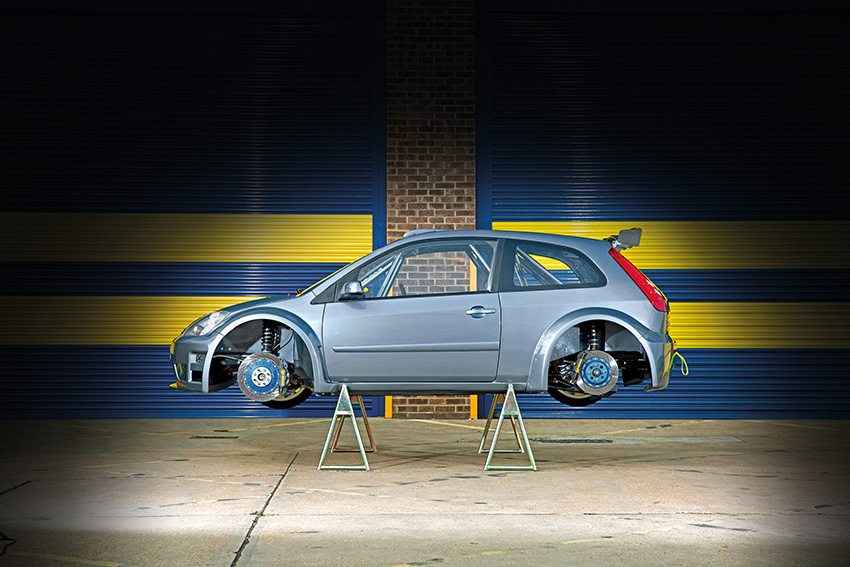
Brakes
On track you are constantly using your brakes, and you’re using them much harder than under normal road conditions too, so it’s important to consider them when you prepare your car for a track day. Most standard brakes won’t cope. As a bare minimum you should look to upgrade to a performance compound brake pad, ideally with suitably upgraded discs at the same time, and a swap to a decent- quality brake fluid. At the same time, an upgrade to braided brake lines will eliminate any vague pedal feel that can sometimes occur because of the standard rubber hoses expanding under hard use.
A better option is to upgrade the disc and calliper setup with something more powerful, along with suitable pads. It doesn’t have to cost a fortune, and you may find a budget-friendly option such as fitting the Focus ST170 300mm setup on a Fiesta. But for the ultimate in stopping power, you’ll want to ditch the whole lot and fit a complete performance brake kit. It will allow you to brake hard and late, and more importantly, will allow you to do it lap after lap without fade.
Need to know more about braking? Check out our performance brakes guide, as well as our pads guide.
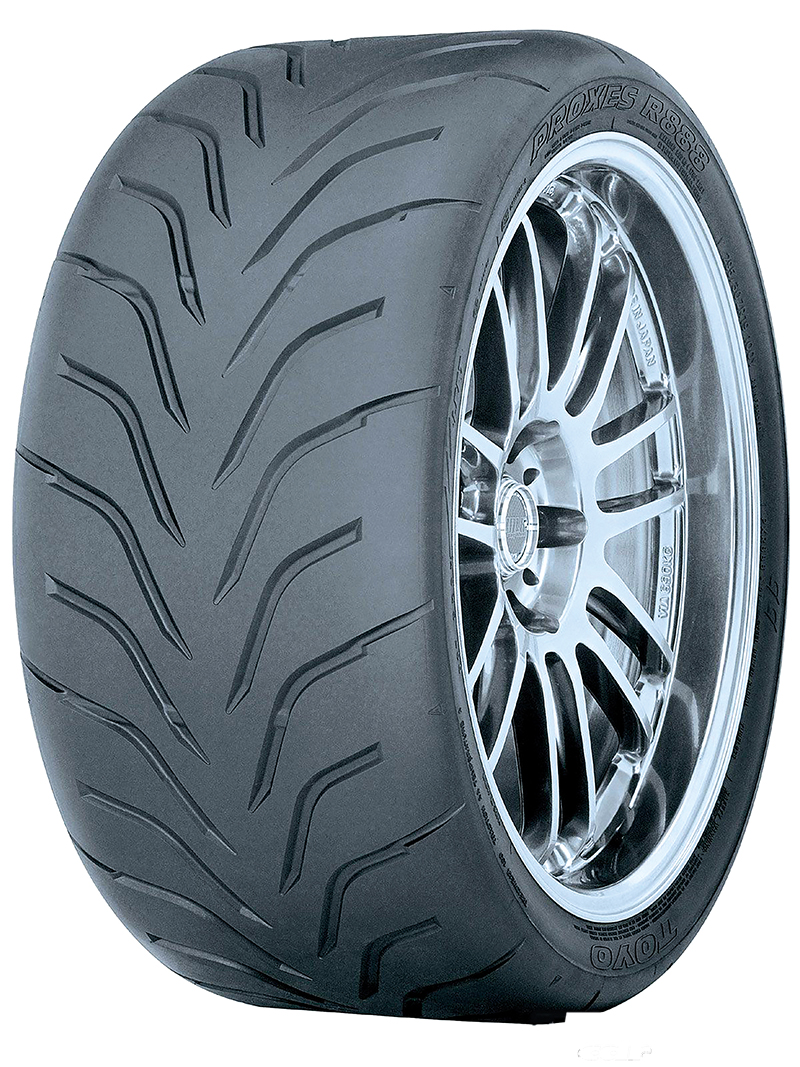
Wheels & tyres on a track day
Most factory wheels are heavy and soft; two things you don’t want from a track wheel. You’ll need strength for obvious reasons, while reducing unsprung weight will help with braking, turn-in, and generally make the car nicer to drive on track.
A set of motorsport alloys will be a good upgrade. Cast alloy wheels are the perfect entry-level wheel for track-day use, but some can still be a bit on the heavy side. For something a little more advantageous, a set of forged alloy wheels will have increased strength and lighter weight. But you pay the price – which is a hefty outlay.
Split-rims used to be very popular for track use, but today are equally as popular in the show scene as they are in motorsport. They are still perfectly adequate for track use but do require a fair bit of maintenance and tend to be expensive too.
This is one of the most important factors your should consider when your prepare your car for a track day. The number one rule regarding tyres is make sure they are in good condition. You can use regular road tyres on track but remember that track use will wear them out rapidly, so make sure you’ve got enough tread left at the end of the day to drive home safely. Tyre pressures will also need to be set lower than for regular road use; when used on track the excessive movement and heat build-up within the tyre will cause the tyre pressure to increase, therefore this needs to be taken into account when setting the pressures in the pits. Just remember to reset them again if you are using the same tyres to drive home later.
A better bet is to have a second set of ‘track’ wheels and tyres that you bolt on at the circuit, and then swap back to your ‘road’ wheels before hitting the road home. This also allows you to fit rubber that is better suited to track use, such as semi-slicks.
Make sure you check out our alloy wheels guide for more information. We’ve also got advice on which tyres to pick for your modified car.
Exterior
Painting your car a bright colour or covering it in stickers may help it look like a race car, but it’s not going to make any difference to your performance on track. But exterior upgrades that affect the car’s aerodynamics can help. Adding things like a proper front splitter, smoothing the underside, and adding a diffuser and spoiler at the rear can help direct the airflow to create useful downforce. This is a bit advanced for the occasional track day, but the same principles will work for road use too.
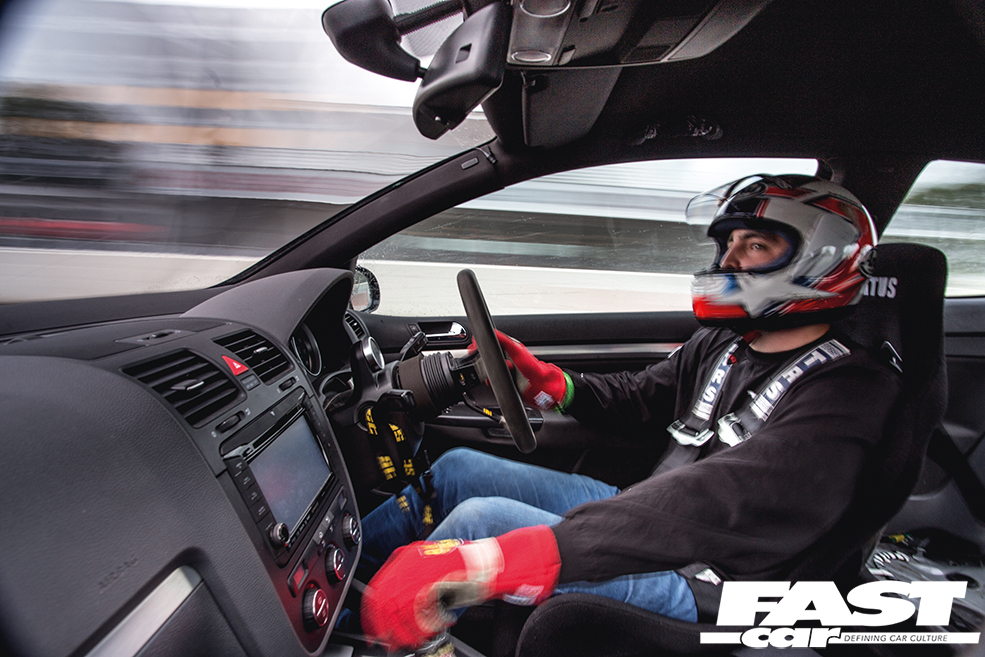
Interior
A lighter car is a faster car, which is why we’ve included an interior section in our how to prepare your car for a track day guide. At a basic level, just give the car a good clean out; you don’t need to be carting a boot full of stuff around the track, so make sure you take out the spare wheel and jack, and any other loose bits you might have kicking around in the car. Not only will this improve performance, it also makes things safer – the last thing you want is a loose item flying around inside the car.
If you are planning on doing track days regularly you might want to think about removing some of the heavier and unwanted parts of the interior trim. This can range from simply removing the back seats, to a complete strip down and installation of lightweight bucket seats and harnesses.
What track day should I pick?
With loads of events each month all over the country, finding a track day to suit won’t be an issue, but here are a few things to consider before booking:
Noise limits: This is set by the local council and will be strictly enforced. If you’ve got a loud aftermarket exhaust, get the dB levels checked. If your car is too loud, you won’t be allowed on track.
Format: You have two main choices: ‘session’ or ‘open pitlane’. The former groups drivers of similar ability into 20-30 minute sessions – this is probably the best bet for newbies. Open pitlane days offer as little or as much track time as you want (as long as the maximum number of cars on track isn’t exceeded), but usually cost more, as numbers have to be restricted by the organiser.
Instruction: Check if there is an ARDS (Association of Race driving Schools) instructor on hand. You’ll find a 20-minute session (about £50), with your own personal Stig, will teach you loads and boost your confidence.

What to expect on a track day
At the track you’ll get a short briefing that covers the format and rules for the day and the flag signals. The main rules cover how and when you can overtake and that you must NOT race! Track marshals positioned around the circuit monitor this closely and anyone breaking this important rule will be immediately pulled in to explain themselves.
On your first few laps, you probably won’t be familiar with the track and your tyres will be cold. Do not be tempted to go for it straight away as this is probably the time you are mostly likely to have an off! Start slow and build up speed as your confidence grows and tyres warm up. Throwing the car around might be fun, but if you overdo it, you may unsettle the car and risk going off (plus it will take its toll on the car with parts wearing out faster!). Concentrate on driving smoothly – smooth is fast. Aim for getting braking points and corner apexes right. Get your gear changes and braking done in a straight line before turning into a corner then feed the power in gently as you exit the corner and don’t forget to wind the steering lock off as you exit. Practice keeping steering inputs to a minimum.
After a session, always complete a cool-down lap to get some air to the brakes, engine and the transmission, and once stopped in the pits DO NOT apply the handbrake, as the pads can fuse themselves to the discs if you’ve been using them hard. Popping the bonnet will help cool the engine too, which gives you a chance to double-check your fluid levels. Also, check the tyres again for excessive wear and that the pressures are still OK; and that all the wheelnuts are tight.
Don’t forget to check out track guides to help familiarise with the layout of the circuit before your next track day.

